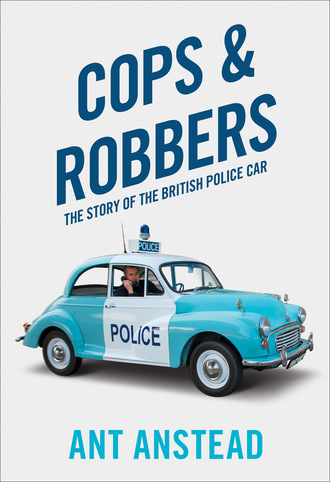
Полная версия
Cops and Robbers
Some of the last cars to be adorned in the two-tone livery were the Austin Allegro and the Talbot Sunbeam. The Allegro was used extensively by the Met and in forces like West Midlands Police, who now ordered theirs in plain blue, but instead of painting the doors white they opted to place a large white sticker on the doors with the word ‘police’ on it. The Talbot Sunbeam wasn’t as popular as it could have been, due to its cheap build quality and poor reliability, but the Met Police and the likes of Cumbria and Sussex did use it. Meanwhile, the Avon and Somerset Police used the Hillman Avenger 1500HL in blue and white as a response unit rather than an outright panda car. We were beginning to see a blending of roles, not just in the Bristol area but in most other counties as well.
By 1979 financial constraints were hurting the public-sector purse strings and police fleet managers had to look at ways to save cash. Thus the panda car died. Well, the livery did, but not the concept itself, which lives on to this day in most forces. Police still use run-of-the-mill, cheap, small-engine cars to do the basic running-around policing we now call anything from sector policing to community policing. Along the way we have seen cars like the Vauxhall Astra in all its variants, the Ford Fiesta and Focus, the Peugeot 306, 309 and the 208, the Rover 220 and several others, no doubt. In twenty-first-century Britain it’s the Ford Fiesta and the Vauxhall Corsa that seem to be the current favourites. But thanks to the Home Office the entire concept has now been lost because of its insistence that all police vehicles carry the same livery nationwide, no matter what that vehicle’s role might be. You can read the full story elsewhere in this book, but basically in the late 1990s the Labour government introduced the blue and yellow Battenburg livery to all emergency service vehicles. It wasn’t well received and took some forces 20 years to comply. So now we have everything from a Ford Fiesta through to a BMW X5, from motorcycles to Mercedes-Benz Sprinter vans all carrying the same graphics. In some ways the government’s argument echoed that of Colonel St Johnson all those years ago, in that they wanted the cars to stand out and to be easily recognisable by the public – including foreign tourists – as a police car. But nowadays it seems others are using it, too; for example, Highways Traffic Officers use black and yellow Battenburg, and every security company and dog warden known to man decorates his van with Battenburg, as do your local recovery garages, emergency doctors and many others.
The original concept was brilliant and, more importantly, it worked very well indeed and without doubt changed the face of British policing forever. The only thing that hasn’t changed is that Oxford Dictionary definition!
The Noddy Bike
The Unit Beat Policing, or UBP, scheme changed policing in the UK as well as providing a whole new livery and type of police car to talk about in this book! However, the very beginnings of the concept of mobile policing using a cheap economical vehicle so that a wider area could be covered was the quite wonderfully named ‘Noddy Bike’ scheme. From the early 1960s bobbies in selected areas were given Velocette LE motorcycles in an effort to achieve greater mobility. The name came about because those constables riding them were exempt from saluting senior officers, this being a potentially lethal practice while riding a bike at 40mph! They were allowed, instead, to merely nod their head, a massive change in protocol which, if we had the time and space, could be argued to be the beginning of the end of the old police services’ quasi-military structure … The LE (which amazingly enough apparently stood for ‘little engine’) was introduced in 1948 and was a strong, tough little bike with a smooth and very quiet running transverse, water-cooled, side-valve, flat-twin, 4-stroke engine of, initially, 149cc, although later versions used a 250cc unit. It wasn’t a bike for bikers but rather a machine for transport, and it added as much civilisation and comfort to the motorcycling experience as it was possible to do in that era, originally being fitted with a hand-operated starting lever, for instance, although this design was later dropped in favour of a kick-start. It started the police on a road towards mechanised movement for beat bobbies, but was used mainly in rural areas and by no means exclusively to move between beats in the way the UBP was developed. It’s important to say it wasn’t the start of panda cars, although people often speak of them as such on the web, but it’s equally fair to say that they were a signpost on the road towards the panda car, and no discussion of this policing theory and practice is complete without at least a nod to the Noddy bike.
Конец ознакомительного фрагмента.
Текст предоставлен ООО «ЛитРес».
Прочитайте эту книгу целиком, купив полную легальную версию на ЛитРес.
Безопасно оплатить книгу можно банковской картой Visa, MasterCard, Maestro, со счета мобильного телефона, с платежного терминала, в салоне МТС или Связной, через PayPal, WebMoney, Яндекс.Деньги, QIWI Кошелек, бонусными картами или другим удобным Вам способом.



